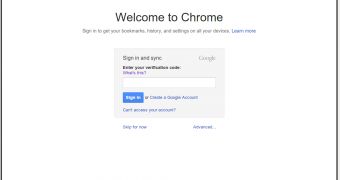Google's two-step verification or authentication has been a great boon for security for all users. The more people that use it the better. But the feature does come with a few more hurdles than just using a plain password. One annoying problem is having to provide an application specific password for any app that uses your Google credentials.
The idea is to make sure you don't reveal your password to these apps or enable them to log you in with just the password, rendering two-step verification useless.
But having to go to your Google account settings page and generate a new password for any app you use is annoying and time consuming.
Thankfully, quite a long time after two-step authentication was rolled out, Google has fixed the problem in Google Chrome which now supports the feature entirely.
Chrome uses your Google account for the sync feature. Normally, you'd provide your account credentials, i.e. your username and password, and then have to provide an app specific password.
Now, in the latest Google Chrome dev, you'll be asked for your username and password and then for your verification code, generated by the Google Authenticator app or sent via SMS.
There's no more need for an app specific password, so the entire process is simpler and faster.
Considering that it took Google this long to make it work in Google Chrome, it's a safe bet that you're not going to see this implementation in other apps or services any time soon and that you'll be stuck with app specific passwords for a while longer.
Which is a shame, because app specific passwords add complexity to the feature, complexity which most people don't want to wrestle with, meaning that two-step verification will remain a feature for power users and tech savvy people for now.

 14 DAY TRIAL //
14 DAY TRIAL // 
